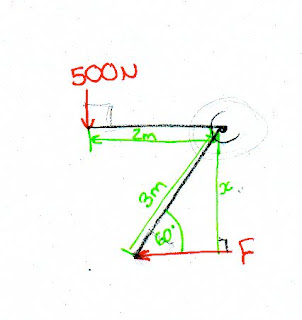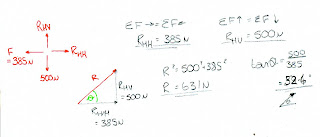Shapes are important when designing structures. We have already looked at this through nodal analysis and I hope that you saw that the most commonly used shape was the triangle as this is the strongest shape. However it is not just shape that will influence to the overall performance of a structure, the materials used play an important role as well. If one member fails it could have a domino effect on the rest of the structure.
Engineers must therefore consider the properties of the different materials in order to make an informed and sensible choice for the job in hand.
The most common properties to be considered include:
STRENGTH - the ability of a material to resist force. All materials have some degree of strength - the greater the force the material can resist, the stronger the material. Some materials can be strong in tension but weak in compression, for example mild steel. The converse can also be true as is, the case with concrete, which is strong in compression but weak in tension. Hence, the reason that concrete is often reinforced with mild steel.
ELASTICITY - the ability of a material to return to its original shape or length once an applied load or force has been removed. A material such as rubber is described as elastic because it can be stretched but when it is released it will return to its original condition.
PLASTICITY - the ability of a material to change its shape or length under a load and stay deformed even when the load is removed.
DUCTILITY - the ability of a material to be stretched without fracturing and be formed into shapes such as very thin sheets or very thin wire. Copper, for example, is very ductile and behaves in a
plastic manner when stretched.
BRITTLENESS - the property of being easily cracked, snapped or broken. It is the opposite of ductility and therefore the material has little plasticity and will fail under loading without stretching or
changing shape. Cast iron and glass are obvious examples of materials that are brittle.
MALLEABILITY - the ability of a material to be shaped, worked or formed without fracturing. It is closely related to the property of plasticity.
TOUGHNESS - the ability to absorb a sudden sharp load without causing permanent deformation or failure. Tough materials require high elasticity.
HARDNESS - the ability to resist erosion or surface wear. Hard materials are used in situations where two surfaces are moving across or over each other.
STIFFNESS - the ability to withstand bending
Tensile Testing
Effects of Loading on a Material
Stress: Stress is the effect of a force on the cross-sectional area. The symbol is σ (sigma) and it is measured in N/mm2
σ = F/A
Where F is force measured in N and A is area measured in mm2
Strain: Strain is the effect of a force in a material's shape. In compression or tension this is the length of the material. The symbol is ε and strain is unitless.
ε = ΔL / L
Where ΔL is change in length (either stretched or squashed) and L is original length.
Young's Modulus: This refers to the to the stiffness of the material during its elastic region. The higher the modulus, the greater the stiffness. On a stress/strain graph the Young's Modulus can be found using the gradient of the slope in the elastic region. The symbol is E and the unit is N/mm2.
E = σ/ε
Values of Young's Modulus for common materials can be found in the data booklet. You may need to access this in order to carry out calculations. Be aware of the units here, the table is in kN/mm2 so you need to change this to N/mm2 in order to use it.
Factor Of Safety
No matter how well designed structures are, unforeseen circumstances can see them fail. An engineer can never be absolutely sure that (s)he has accounted for every type of load that will affect the structure. Most common reasons for structural failure are:
Overloading: When the loads applied to the structure exceed the value used in the design process. It could have been used inappropriately, or live loads which cause sudden changes in loading could have caused overloading.
Material/Joint Failure: The material within the structure may not be of consistent high quality or it has deteriorated over time. Natural materials like wood can never be guaranteed as they contain natural defects. The joints used could be inappropriate or not correctly put together.
Fatigue: It is difficult to predict when a structure will fail but repeated loading and unloading on a structure will wear down the material's resistance to breaking and it will eventually fail.
A factor of safety must be chosen depending on the performance criteria/specification of the subject. Over designing may be expensive, so an appropriate FoS is required. Consider:
- The value of the load and the accuracy of calculations
- The type of load
- The reliability/quality of the material
- The effect of corrosion or wear on the dimensions of the structure
- Errors during manufacture of construction
- The consequences of failure - how close will humans be to the structure?
Factor of safety has no units. There are two formula in your data booklet, but ALWAYS use the stress equation:
Factor of Safety = Ultimate Stress/Safe working stress
Once you have found the factor of safety you can apply it to the structures you design or do calculations on. So if a factor of safety is applied this will effect the dimensions of the material etc.
In order to find the maximum stress you may need to use the data booklet table. You will probably need to use Young's Modulus from this table also.

















